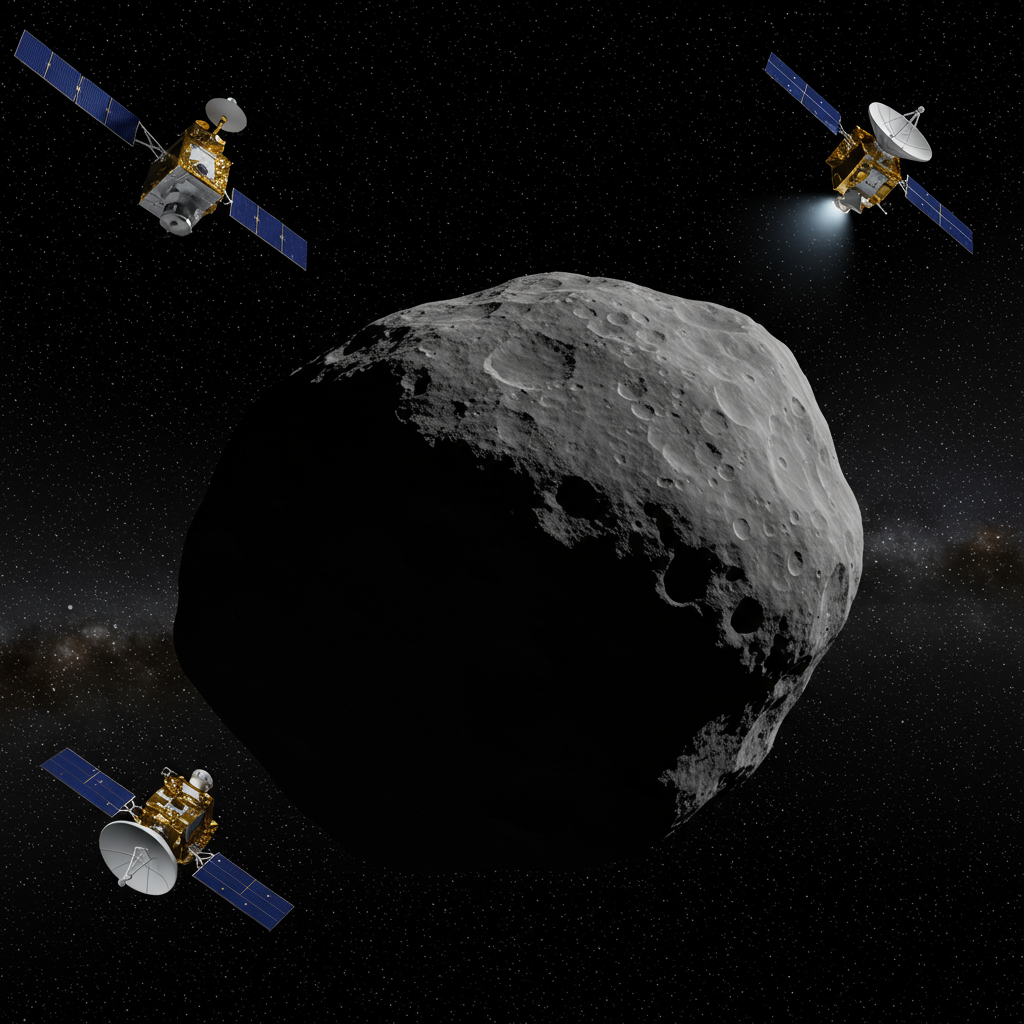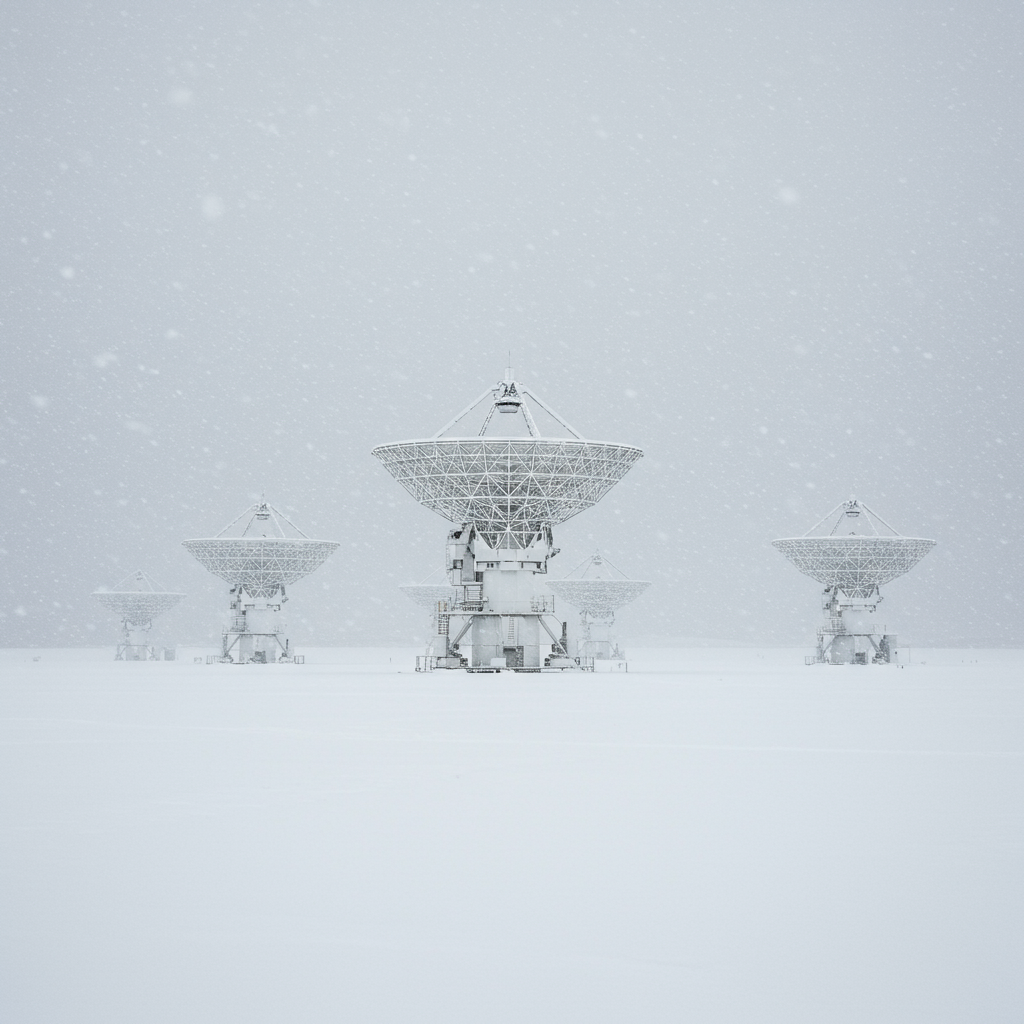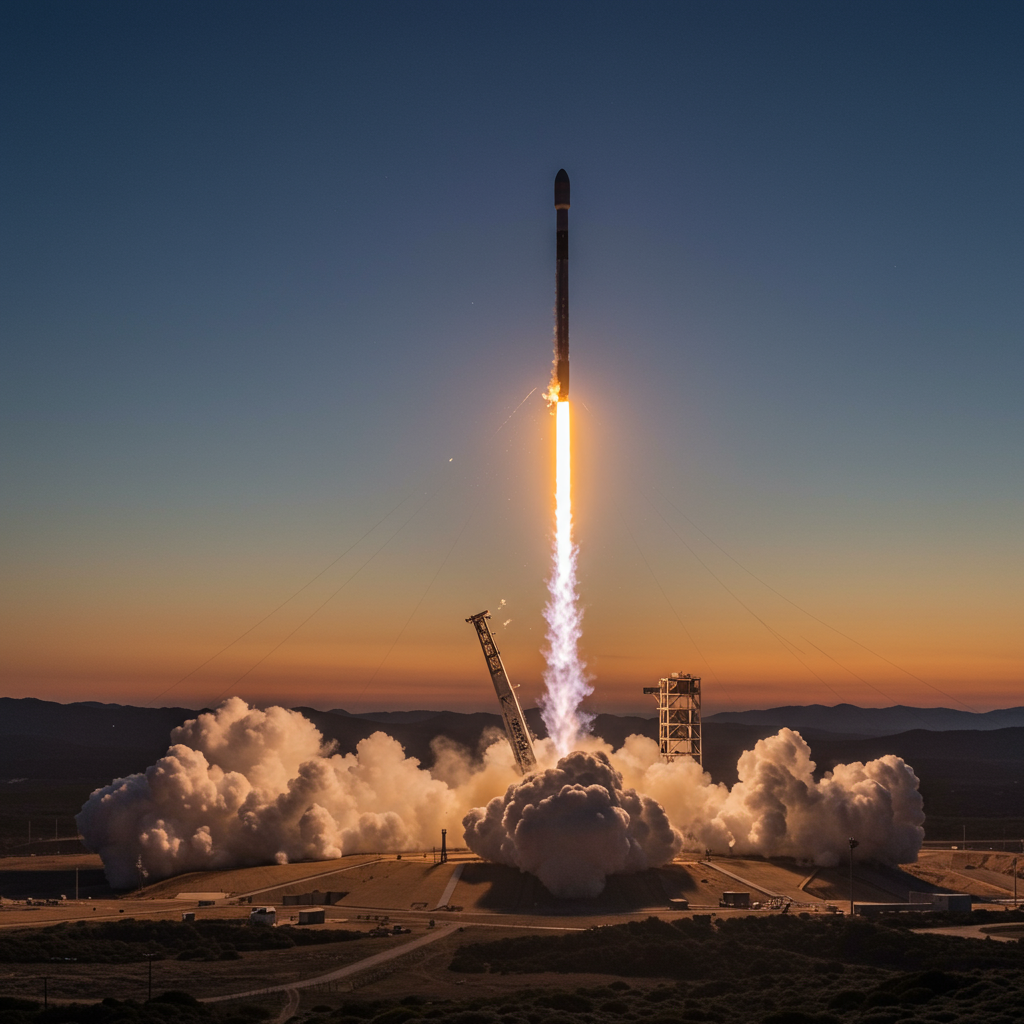The infamous Apophis asteroid, once dubbed the “God of Chaos,” is preparing for an unprecedented close encounter with Earth in April 2029. Far from being a threat, this celestial event offers scientists a once-in-a-millennium natural experiment. An international fleet of three advanced space missions is poised to intercept and scrutinize this massive near-Earth asteroid, promising to revolutionize our understanding of asteroid behavior and bolster planetary defense strategies. This rare spectacle will also be visible to billions of people worldwide.
The “God of Chaos” Returns: A Historic Close Approach
On Friday, April 13, 2029, the Apophis asteroid, a colossal space rock roughly 1,100 feet (340 meters) wide—comparable to the height of the Eiffel Tower—will safely skim past Earth. This dramatic flyby will occur at an astonishing proximity of just over 18,600 miles (30,000 kilometers) from our planet’s surface. This is closer than our geosynchronous satellites that orbit Earth. Initial concerns about a potential impact, which arose after its discovery in 2004, have been definitively dismissed by scientists. Richard Binzel, an MIT professor and pioneer in asteroid hazard research, repeatedly reassures the public that “Apophis will safely pass the Earth.”
The extreme rarity of such a large asteroid making a close approach like this cannot be overstated. Experts estimate an event of this magnitude occurs only once every 7,500 years. This makes the 2029 flyby a truly “once-in-a-lifetime spectacle” for both scientists and the global public. An estimated two billion people, primarily across Africa and Western Europe, will have the extraordinary opportunity to witness Apophis streak across the night sky with the naked eye. It will appear as a faint, steadily moving star, similar in brightness to those in the Big Dipper.
Why Scientists Are Thrilled: A Natural Experiment Unfolds
For planetary scientists, the Apophis flyby transcends a mere celestial show. It represents an invaluable “once-in-a-millennium natural experiment.” Researchers are eager to observe, in real-time, how Earth’s immense gravitational forces will physically reshape the asteroid. This gravitational dance is expected to significantly alter Apophis’s orbit, transforming its Aten-class trajectory into a wider Apollo-class path. Its rotation could also change, potentially sending the asteroid into an entirely new tumbling state. As Professor Binzel succinctly puts it, “The Earth won’t care, but Apophis will care, because Apophis’ orbit will change.”
Studying these induced changes will provide crucial data on asteroid internal structure, surface dynamics, and how celestial bodies interact under strong gravitational stress. Such insights are vital for refining models used in planetary defense. This includes understanding potential outcomes if humanity ever needs to deflect a hazardous asteroid.
The Elite Trio: International Missions Poised for Observation
To maximize the scientific harvest from this rare event, three distinct space missions are either planned or already en route. They aim to provide a comprehensive, multi-faceted investigation of the Apophis asteroid. Operational teams are actively coordinating their observation strategies. This ensures a synchronized approach to data collection. Michael Nolan, OSIRIS-APEX’s deputy principal investigator, highlights this synergy: “The spacecraft have different strengths… With the science teams talking to each other, we can say, ‘If you make this observation, we can make that observation,’ and that’s a better thing than either of us could do separately.”
NASA’s OSIRIS-APEX: From Bennu to the “God of Chaos”
NASA’s OSIRIS-APEX is an extended mission of the highly successful OSIRIS-REx spacecraft, which recently returned samples from asteroid Bennu. This probe is already in space and actively preparing for its close encounter with the Apophis asteroid. Its primary objectives include mapping Apophis’s surface in exquisite detail, diligently monitoring its spin state, and precisely measuring how Earth’s gravity influences it.
One particularly ambitious goal involves measuring seismic vibrations within Apophis. This type of measurement has only been achieved for the Moon and Mars previously. It promises “another leap forward in seismic measurements and interpretation of interior properties.” However, the mission faces an uncertain future. An earlier budget request from the Trump administration proposed its cancellation. Despite these budgetary hurdles, the mission continues its preparations, hoping Congress will secure its funding.
ESA’s Ramses: Europe’s Dedicated Apophis Interceptor
The European Space Agency (ESA) is developing the “Rapid Apophis Mission for Space Safety,” or Ramses. This mission builds upon the successful heritage of the Hera mission, which is designed to follow up on NASA’s DART planetary defense mission. Monica Lazzarin, a professor at the University of Padua, provided a recent update on Ramses at the Europlanet Science Congress (EPSC) and Division for Planetary Sciences (DPS) in Helsinki.
Ramses is slated for a spring 2028 launch. It aims to thoroughly characterize the Apophis asteroid, focusing on its precise orbit, rotational state, internal structure, and any surface changes induced by Earth’s tidal forces. The mission’s progression, however, hinges on a critical final funding decision from the ESA Ministerial Council in Bremen, Germany, scheduled for late November. If approved, Ramses will also deploy two small cubesats before the close encounter. One of these might even attempt a landing on the asteroid, equipped with a navigation camera, seismometer, and magnetometer. International collaboration is central to Ramses, with the Japan Aerospace Exploration Agency (JAXA) providing a thermal infrared camera and other crucial instruments.
JAXA’s DESTINY+: A Timely Detour for the Apophis Asteroid
The Japan Aerospace Exploration Agency (JAXA) also has its sights on Apophis. Their DESTINY+ mission was initially designed to study 3200 Phaethon, the parent body of the Geminid meteor shower. However, delays in the development of its planned launch vehicle, the Epsilon S solid-fuel rocket, unexpectedly created a new opportunity. DESTINY+ will now rendezvous with the Apophis asteroid before continuing its journey to its primary target. Professor Lazzarin noted that Ramses and DESTINY+ are scheduled to launch together on a Japanese flagship H3 rocket, highlighting a growing trend of international cooperation in space exploration.
Apophis and Planetary Defense: A Crucial Proving Ground
Beyond pure scientific curiosity, the Apophis flyby serves as a crucial “proving ground” for global planetary defense efforts. Thomas Statler, a NASA planetary scientist, emphasizes that while Apophis is “not a planetary defense emergency,” it is an “unprecedented opportunity” to refine our understanding of asteroid dynamics. Richard Binzel frames this perfectly: “Planetary defense equals applied planetary science,” calling the 2029 event “the final exam” for which preparation is vital now.
Studying how Earth’s tidal forces reshape Apophis will directly inform and improve models used for potential future asteroid deflection missions. It underscores a broader message: asteroids are not merely objects of fear, but rather celestial bodies that we must strive to understand. The data gathered by this trio of missions will significantly advance our capability to protect Earth from space-based threats, should they ever arise.
Frequently Asked Questions
Is the Apophis asteroid a threat to Earth in 2029?
No, the Apophis asteroid poses absolutely no threat to Earth during its 2029 flyby. Initial concerns after its discovery in 2004 were based on early, less precise orbital calculations. Decades of continuous tracking and radar observations have significantly refined its trajectory. Scientists, including MIT’s Richard Binzel, emphatically confirm that Apophis will safely pass Earth, flying closer than geosynchronous satellites but well within a safe margin. It has been removed from all risk lists for at least the next 100 years.
Which space missions will study the Apophis asteroid during its 2029 flyby?
Three international space missions are poised to study the Apophis asteroid. NASA’s OSIRIS-APEX, an extended mission of the OSIRIS-REx spacecraft, is already en route. The European Space Agency (ESA) is developing Ramses (“Rapid Apophis Mission for Space Safety”), aiming for a spring 2028 launch. Finally, the Japan Aerospace Exploration Agency (JAXA) will send its DESTINY+ mission, which was rerouted to include Apophis before heading to its original target.
How can I see the Apophis asteroid when it passes Earth in 2029?
The Apophis asteroid’s close flyby on April 13, 2029, is expected to be visible to the naked eye for approximately two billion people. Viewers in Africa and Western Europe will have the best vantage point. It will appear as a faint, steadily moving star, comparable in brightness to stars in the Big Dipper. While specific viewing times and precise locations will be announced closer to the date, no special equipment will be required to witness this remarkable celestial event.
A Glimpse into Our Cosmic Future
The 2029 close approach of the Apophis asteroid represents a pivotal moment in astronomy. It’s a chance to witness a dynamic interaction between a massive asteroid and our planet’s gravitational field. More importantly, it is a critical opportunity to gather invaluable scientific data. The coordinated efforts of NASA, ESA, and JAXA through OSIRIS-APEX, Ramses, and DESTINY+ will collectively deepen our understanding of these ancient wanderers. This enhances our ability to safeguard Earth from future space-based hazards. As we look to the skies in April 2029, we’ll not only observe a rare celestial spectacle but also witness humanity’s advancing capabilities in space exploration and planetary defense.




